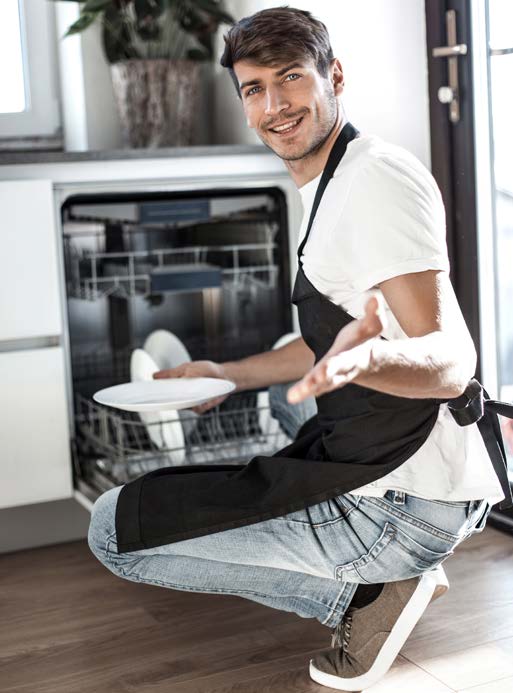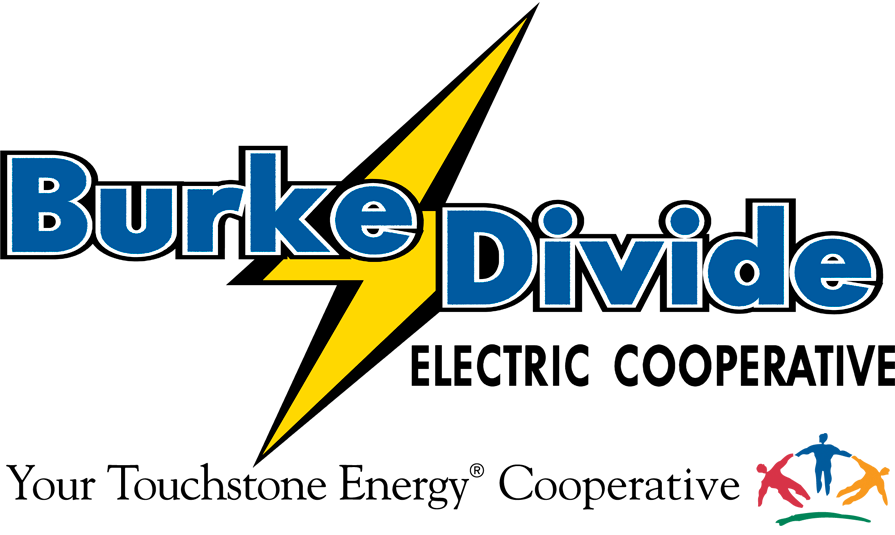 Your kitchen doesn’t have to eat up your energy bill. You can save energy in your kitchen through more efficient use of your dishwasher, refrigerator and other common appliances.
Your kitchen doesn’t have to eat up your energy bill. You can save energy in your kitchen through more efficient use of your dishwasher, refrigerator and other common appliances.
DISHWASHERS
Most of the energy used by a dishwasher is for water heating.
- Check the manual that came with your dishwasher for the manufacturer’s recommendations on water temperature; many have internal heating elements that allow you to set the water heater in your home to a lower temperature (120 degrees).
- Scrape off large food pieces and bones, rather than rinsing. Soaking or pre-washing is generally only recommended in cases of burned- or dried-on food.
- Be sure your dishwasher is full (not overloaded) when you run it.
- Avoid using the “rinse hold” on your machine for just a few soiled dishes. It uses 3-7 gallons of hot water each use.
- Let your dishes air dry; if you don’t have an automatic air-dry switch, turn off the control knob after the final rinse and prop the door open slightly so the dishes will dry faster.
REFRIGERATORS
The EnergyGuide label on new refrigerators tells you how much electricity in kilowatt-hours a particular model uses in one year. The smaller the number, the less energy the refrigerator uses and the less it will cost you to operate.
- Don’t keep your refrigerator or freezer too cold. Recommended temperatures are 35 to 38 degrees for the fresh food compartment and 0 degrees for separate freezers for long-term storage.
- Check the refrigerator temperature by placing an appliance thermometer in a glass of water in the center of the refrigerator. Read it after 24 hours. Check the freezer temperature
- by placing a thermometer between frozen packages. Read it after 24 hours.
- Make sure your refrigerator door seals are airtight. Test them by closing the door over
- a piece of paper or a dollar bill so it is half in and half out of the refrigerator. If you can pull the paper or bill out easily, the latch may need adjustment, the seal may need replacing, or you may consider buying a new unit.
- Cover liquids and wrap foods stored in the refrigerator. Uncovered foods release moisture and make the compressor work harder.
- Regularly defrost manual-defrost freezers and refrigerators; frost buildup decreases the energy efficiency of the unit. Don’t allow frost to build up more than one-quarter of an inch
MORE TIPS TO SAVE:
- Place the faucet lever on the kitchen sink in the cold position when using small amounts of water; placing the lever in the hot position draws hot water even though it may never reach the faucet.
- Keep range-top burners and reflectors clean; they will reflect the heat better, and you will save energy.
- Use a covered kettle or pan to boil water; it’s faster and uses less energy.
- Match the size of the pan to the heating element.
- Use small electric pans, toaster ovens or convection ovens for small meals rather than your large stove or oven. A toaster or convection oven uses one-third to one-half as much energy as a full-sized oven.
